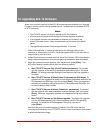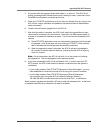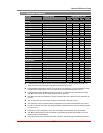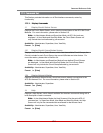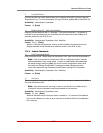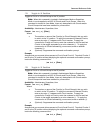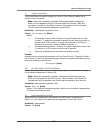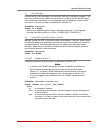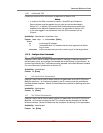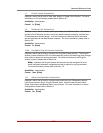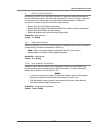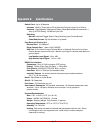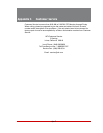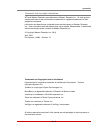
17-7
Command Reference Guide
/K Send SSH Key
Instructs the AFS-16 to provide you with a public SSH key for validation purposes. This
public key can then be provided to your SSH client, in order to prevent the SSH client
from warning you that the user is not recognized when you attempt to create an SSH
connection. For more information, please refer to Section 10.1.
Availability: Administrator
Format: /K k [Enter]
Where k is a required argument, which indicates the key type. The k argument
provides the following options: 1 (SSH1), 2 (SSH2 RSA), 3 (SSH2 DSA.)
/UL Unlock Port (Invalid Access Lockout)
Manually cancels the AFS-16’s Invalid Access Lockout feature. Normally, when a series
of failed login attempts are detected, the Invalid Access Lockout feature can shut down
the effected port for a user specified time period in order to prevent further access
attempts. When the /UL command is invoked, the AFS-16 will immediately unlock all
ports that are currently in the locked state.
Availability: Administrator
Format: /UL [Enter]
/TELNET Outbound Telnet
Creates an outbound Telnet connection as described in Section 10.2.
Notes:
• Inorderforthe/TELNETcommandtofunction,Telnet/SSHandOutbound
ServiceAccessmustbeenabledforyouruseraccountasdescribedin
Section5.5.Inaddition,TelnetAccessandOutboundAccessmustalsobe
enabledviatheNetworkParametersmenu,asdescribedinSection5.9.2.
• IfyouhaveloggedinviatheNetworkPort,the/TELNETcommandwillnot
function.
Availability: Administrator, SuperUser, User
Format: /TELNET <ip> [port] [raw] [Enter]
Where:
ip Is the target IP address.
port Is an optional argument which can be included to indicate the target port
at the IP address.
raw Is an optional argument which can be included to indicate a raw socket
connection. In order to create a raw socket connection, the command line
must end with the text "raw".



